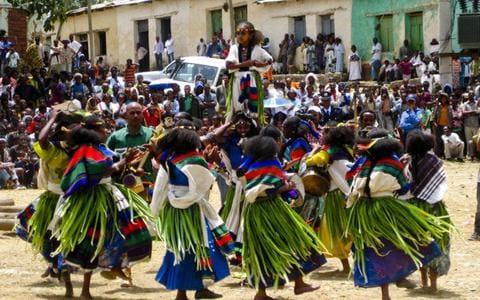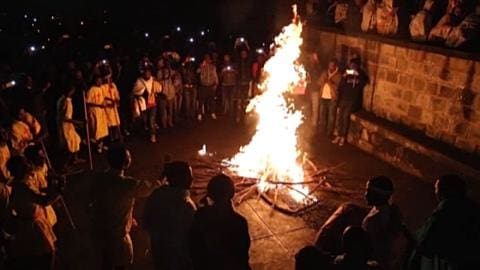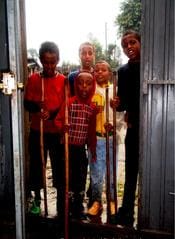August 11, 2018
Ethiopian spring festivals represent celebration of the transition of the season that are associated with the integral aspect life which depends on the seasonal change time where the gloomy rainy season or “kiremt” leaves for the sunny beautiful summer day and instills happiness which is expressed by happy thanksgiving like celebrations those take place among different ethnic groups of the country as we explore different spring festivals carried out in the country we will also try to explore the traditional hand-woven Ethiopian dressings that accompany the season within this article and many more to come in the series, stay tuned with us at ethiopianclothing.net as we wonder through our country’s unique moments that define the very source of our identity and pride.

Ashenda or Shadey is a one very colorful celebration that mainly takes place in mid August in northern Ethiopian areas of Tigray and Amhara Agew area where it is called Ashenda and Shadey respectively it’s also celebrated in areas of Wollo called Raya and Kobo where it’s called (solel) and it also has other names in parts Tigray such as Ayniwari in town of Axum and mariya in the town of Adigrat. The day is also celebrated in neighboring country Eritrea which shares very similar traditions with the above areas of the northern Ethiopian regions which showcases beautiful green flowery traditional Eritrean dresses being worn by the girls who celebrate the day. The event marks the end of two week fasting or known as (tsome filseta) to honor virgin marry of Zion by Ethiopian and Eritrean Orthodox Christian faith followers that’s why its holiday of the girls where they go around singing and dancing in groups in their beautiful Habesha kemis (Ethiopian and Eritrean traditional dress) around their towns and cities collecting gift from strangers for three days.
“The beauty of a woman is not in the clothes she wears, the figure that she carries, or the way she combs her hair. The beauty of a woman is seen in her eyes, because that is the doorway to her heart, the place where love resides. True beauty in a woman is reflected in her soul. It’s the caring that she lovingly gives, the passion that she shows & the beauty of a woman only grows with passing years.”
Audrey Hepburn
And that what you see during the Ashenda or Shadey festival the happiness of the girls one that can only be felt by seeing it not reading about it so I highly recommend being a part of it at least once in a lifetime.
The title Ashenda denotes the water channel system that is used to pass water off the roof of a house to the ground while Shadey is a tall grass that grows during this season in the above mentioned areas you can see some of the girls having the grass tied around their waist as they sing and dance as it’s the end of the rainy season and the beginning of spring you might call it Ethiopian spring break festival there are also other festivals during this season celebrated by other ethnic groups of Ethiopia such as the Irecha and Chambalala celebrated by Oromo and Sidama ethnic societies of Ethiopia which we will see them and their traditional Ethiopian clothing’s associated with the events in the coming spring festival article series.

Ashenda or Shadey is a very underrated cultural event which can become a world heritage for girls around the world which is a day dedicated to them only where the rest of the people stand and appreciate their efforts in adding colors to boring day to day life. If may ask what about the boys do they have any holidays the answer is yes they do and it’s called “buhe” or “debre tabor” another spring celebration which marks Gods sign of light on top of mount Zion for his people in despair, this holiday is also celebrated around the same time of the year the Ashenda is celebrated they actually differ by few days, as the girls and the boys also would dress up in there “ejetebabs” which is Ethiopian cultural clothing for men and would go around the neighborhoods singing and chanting praising the people where they are given gifts such as traditionally baked bread called “mulmul” or money. On the eve of the day, the boys would sing their song “hoya hoye” all day and as the sun goes down another exciting part of the event the bonfire ceremony to remember the light God cast on top of mount Zion the boys would run around the bonfire singing and cheering sometimes accompanied by firecrackers.

All these spring festivals lead the main holiday of the season the Ethiopian New Year another grand event which will be celebrated all across the nation which is also a legacy of the country’s unique calendar system devised by ancient scholars this is too a moment where everyone would set out to receive it in their new Ethiopian traditional clothing.


May 19, 2024
December 23, 2022
December 18, 2020
Since 2012, EthiopianClothing.net has proudly curated authentic Ethiopian fashion, blending tradition with elegance. Explore our handpicked collection and embrace the beauty of Ethiopian culture.
Call Us: +251960412041/+251938057705
WhatsApp/Telegram/Imo/Viber
Sign up to get the latest on sales, new releases and more…
Discover Authentic Ethiopian Fashion at EthiopianClothing.net. Celebrating Tradition, Elegance, and Culture.
© 2025 EthiopianClothing.Net.
